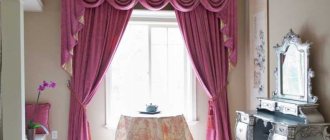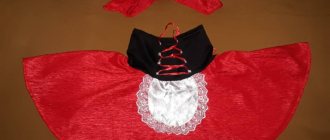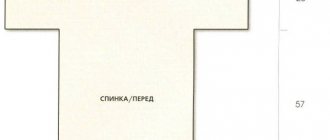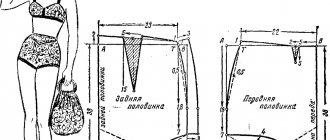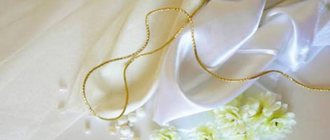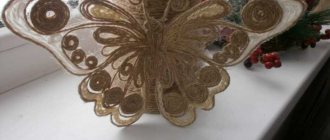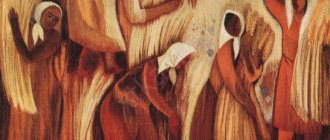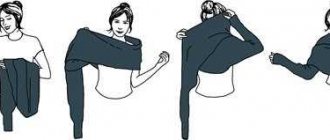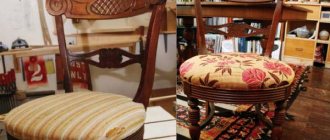Costume base
Typical stage oriental belly dance costumes are based on a base that includes a bodice and a belt. Why is it convenient to create such a foundation? The bodice and belt can be worn with a variety of bloomers and skirts. If the base of the suit is made in gold or silver colors, the trousers and skirt can be of any color. If the base is made, for example, in emerald or purple, the skirt for this outfit should be chosen to match.
A less expensive costume for beginner dancers would be one that is decorated with sequins and beads, as well as bugles, coins, fringe, braid and beads. Inexpensive acrylic stones can be added. In a more expensive version, Swarovski stones are used on jewelry. You can find a copy of the stones in the Chinese version. They are also glass, the quality is no worse, and the colors are different. All that remains is to decide on the color that will be the basis for the oriental beauty’s costume.
Clothes for oriental dances
The delightful and familiar oriental decoration is called Beledi. It consists of a traditional circle skirt, bodice and loincloth. Its appearance is due to Hollywood films of the 1930s, in which the image of the seductress of the East attracted widespread attention and gained unprecedented popularity among viewers.
Components
The skirt can be tailored in various options: “sun”, “half-sun”, straight “fish”, with slits and a high or low waist. To sew this part of the costume, light flowing material is used, creating the impression of a train during the dance.
In addition to a skirt, wide trousers can also be used as a bottom, effectively emphasizing the roundness of the hips. This item usually has a low waist and ruching at the ankles.
The bodice is the upper part of the robe, usually open, and with push-up to visually improve the shape of the chest and give it additional volume. Thanks to its tight fit and elegant decor in the form of fringe, rhinestones, beads and sparkles, maximum spectator attention is drawn to the chest during the dance.
Classic suits of this kind have an open belly, but there are models in which this part of the body is covered with a veil. A scarf or belt is a mandatory element in a dancer’s clothing; they are usually decorated with monists, beads or other luxurious decorative elements. These details, thanks to their melodic ringing during body movements, help to enhance the rhythm of the dance.
As a rule, traditional stage oriental costume does not include shoes; dances are performed barefoot. Despite this, modern dances allow shoes that do not exclude high heels.
Varieties and colors
Ethnic outfits for oriental dances are more modest options . Since women are not allowed to show half-naked bodies to the public, they simply decorate their loosely tailored clothes with a beautiful loincloth or scarf that emphasizes their movements. The costumes of representatives of different countries differ significantly from each other.
For example, for a Turkish woman it includes a shirt made of thin material (gemlek), trousers, a fitted caftan (entari) and a jacket (jelek).
Dancers from Israel, Syria and Lebanon wear a loose-fitting robe dress (toba) made from thin cotton with wide sleeves. This robe is designed for hot climates and serves as protection from the sun's rays. Rhinestones, embroidery and coins are usually used as decorations. In Egypt, this kind of costume consists of a long dress-shirt (galabey), decorated with embroidery and laces.
How to make a bodice?
If the costume is for an adult girl, you need to buy a regular bra, one size larger than the dancer’s bust. Why more? Because after the bodice is trimmed with decorations, it will shrink both under the bust and in the cup itself. Some girls who practice oriental dancing prefer to sew the bodice themselves, purchasing cups from the store. But this is a very difficult job. It’s easier to choose a ready-made bra for your chest, and then use it to make a bra for a suit. You should pay attention to how it sits on your chest. If something is wrong, it is better to choose a different bra.
First of all, cut it as shown in the photo below. We cover the cups with fabric selected for the suit. To do this, place the fabric face down on the cup to make darts. They are marked in the photo with a dashed red line. Sew them on a typewriter. We turn the fabric right side out and put it on the cup, trim off the excess fabric just enough to fold it inward and hem it.
Side straps are made as follows. Make a cut of the cut side straps on any dense material, lengthening it in the fastener area. This is done in order to have a fixed length of the strap, and not stretched, as in a bra. Place this cut on dublerin or any adhesive fabric. Trim excess fabric.
Using an iron, iron the adhesive base to the wrong side of the fabric that will be used to cover the side straps. Fold the side strap placed on the adhesive base with the fabric. Fold the fabric and stitch. The edge that will be sewn to the cup is processed with a zigzag. The photo shows that the edge with the clasp is not turned up. It is drawn up at the end of the work, when the bodice is ready and the comfortable length of the straps has been determined. At the ends, hooks for fastening or loops are sewn into which the lacing is pulled, which is convenient for adjusting the tension. The shoulder straps are made to the length required, from finishing fabric set on an adhesive backing, and can be decorated in the same way as the bodice itself.
Sleeve in a suit
There is one more detail to the oriental costume for girls - sleeves in the form of lanterns. They are usually made from the same fabric as the skirt or harem pants. They give the dancer grace in dance. The flashlight is made either as a separate element of the costume, or is sewn to the shoulder strap. The sleeve should not fit the arm, but be fluffy. In this case, in combination with a skirt or trousers, it will look rich. The sleeve may have an unstitched cut along the upper part. The cut can be used to make the same decorations as the cut sides of the trousers.
Stages of self-tailoring
What the stage outfit will be like depends on everyone’s imagination; it can be easily purchased in a specialized store. But in order for the clothes to be unique, it is recommended to spend two or three evenings and make an oriental belly dance costume with your own hands at home. Having decided on the style and fabric, you can safely begin making it.
Sewing bloomers
Despite the fact that at first glance, the robe of Scheherazade or Jasmine seems quite intricate, making it will not take much effort. To sew bloomers, as one of the components, you need to prepare the following materials and tools:
- fabric, such as silk satin, silk or chiffon;
- fringe;
- elastic for the belt and pants;
- scissors;
- needle and thread;
- sewing machine
Before you begin, you need to make an accurate calculation of the fabric that will be required. If the hip volume does not exceed 100 cm, then its amount will be equal to the estimated length. Having decided on the level intended for the top of the product, you need to measure the distance from it to the floor. You should add at least ten centimeters to the length for the elastic on the legs, otherwise they may be too short.
The pattern can be located both lengthwise and crosswise if synthetic fabric is used to make bloomers. In the case of natural material, it is advisable for their length to be located along its strip.
Next, the measured fabric should be cut into two equal rectangles, then put them on top of each other and folded in half, pinned on the sides. Then, from one of the corners next to the fold, measure ten centimeters across and fifteen centimeters along the fabric, connect the marked points with a curved line, and then cut out.
Sew the resulting parts along an arc on a sewing machine, then, turning the edges of the two parts in different directions, sew five centimeters from the bottom and top. The edges on both sides should be overcast so that there is room for the elastic. You can sew fringe or other decorations to the belt of ready-made bloomers.
If the pants are made of opaque and dense fabric, then it is recommended to make the upper part a little narrower so that the product does not look too massive.
Making the bodice
To sew an oriental costume for a girl with your own hands, a top pattern is not necessary, since you can sew a bodice from a ready-made T-shirt or tank top, cutting it to the required length and decorating it with beads. There are two simple ways to create this part.
Belt for oriental costume
You can use felt for the base of the belt. There is a softer one, but it will not hold its shape as well as the denser one. But thin ones can also be used by folding them in several layers. You need to buy felt in a large size (it is usually sold in pieces). It should be enough to form the hip belt of an oriental costume. The simplest option is when a narrow belt is made. You can make it a wave. It is better to create a belt in two parts: front and back. When sewing, you need to make a small margin so that, if necessary, the belt can be slightly increased or decreased. Usually the reserve is made on the side in the fastener.
Sheathing material
The next stage is the selection of material with which the base of the oriental costume will be trimmed. As a rule, this can be supplex fabric, from which swimsuits are sewn. The entire bra is covered with this fabric, not just the cup, so it is important that it does not lose elasticity and stretch. This fabric is also used on the belt, only in this case it does not stretch, but is fixed according to the felt belt pattern.
Many people use satin, thick silk and velvet as lining materials. Undoubtedly, these fabrics look very beautiful, but they are more suitable for sewing the base for children's oriental costumes, where there is no bra, and the upper part is sewn in the form of a cut-down blouse covering the chest. Moreover, the more beautiful the fabric, the less effort you need to put into decorating it. In a suit for a girl, you can sew a belt together with trousers, as in the photo below.
Costume design
After the base of the costume is covered with material, you need to start decorating. You should decide what will be sewn or glued on the bodice and belt of the oriental costume. Beaded stones with hanging beads look much richer than a sequined suit. The work of embroidering sequins in combination with beads is the most labor-intensive. The bodice of the suit is decorated with the selected material.
There are belts that have a relief pattern with curved ends, as in the photo below. If you are going to sew an oriental dance costume with your own hands with a complex belt that contains cut-out parts, you need to think about how to make the openwork part solid. No matter how dense the fabric of the belt is, under the weight of the embroidery it will sag and the back surface will be visible. Here you need clamps, they can be wire or whalebone. In this case, the shape will hold.
The belt in the photo has intricate embroidery, and the hanging is made not with tassels, but with waves of small beads. The belt of an oriental costume has a center at the back. The front part of the belt does not have a center, this is convenient for the case when a young dancer gains or loses some weight and needs to increase or decrease the volume in the side seam.
The flower depicted in front lies as if on the side and looks impressive. It is more difficult to make changes to a belt centered in front and behind if the dancer's size changes. Therefore, before you start embroidering a belt, you should think about the above problem. You can make a fastener at the back using two strong Velcro strips. In this case, there is no need to embroider or narrow the belt. Just move the Velcro. It won’t be visible from a distance, but the belt looks solid.
The most popular accessories for oriental dance
Belly dancing is one of the most spectacular, artistic and exciting dances. The effectiveness of the dance is made not only by the mesmerizing figure eights of the hips, shaking, and various waves of the body and arms, but also by a whole kaleidoscope of all kinds of props and accessories for the dance. The most common of them are:
1. Scarf or shawl. This is perhaps the most common dance accessory. With its help you can convey the entire palette of mesmerizing movements of oriental dance. Many people associate a scarf or shawl with the dance of the seven veils performed by Salome. However, initially the function of the scarf was quite prosaic. With its help, women hid their faces and bodies from the gaze of strangers. Only by the 20th century did headscarves begin to be actively used in dance, largely, by the way, thanks to Samia Gamal. True, many believe that we owe the appearance of scarves in dance to a Russian ballerina who taught the daughters of the Egyptian king to dance.
The scarf itself personifies femininity, rapid flight, and gives a feeling of airiness and weightlessness. A dancer performing with a shawl resembles a butterfly that accidentally flew into the Garden of Eden. But the shawl can also surround it with a halo of mystery and mystery, covering the body or face of the performer.
2. Sagatas are an important attribute of dance, but “taming” them is not so easy. To skillfully work with sagata, it may take many months, or even years of hard training. The sagatas themselves are small (no more than 2–5 cm in diameter) metal plates, which are a kind of musical instruments. There should be four of them in the set: two for each hand. They are worn on the thumb and middle finger. Very often, sagatas are used in automatic telephone exchanges.
3. Saber (dagger) A bladed weapon, essentially intended for battle, looks very unusual in a dance, especially in the hands of an elegant and fragile girl. However, sabers are a completely harmonious attribute for belly dancing and represent rebellion and independence. The dagger is a symbol of deceit, treason and murder and is used much less frequently than the saber. But in Egypt and Turkey, dancing with weapons is generally rare. Women in dance most often use techniques of balancing the saber on the head, shoulder, hip, etc. It looks very impressive: the audience, enchanted, watches the actions of the dancer, unable to take their attentive eyes off the performance. Working with a saber is quite difficult. You need to be able to easily “isolate” one part of the body from another, so that the weapon does not fall off at the most inopportune moment. But men in dance use weapons more to demonstrate combat skills than for balancing.
4. Candelabrum. The candelabra seems to be a rather original and extravagant attribute in belly dancing, but, oddly enough, it is a native Arab object: in Egypt, this dance was performed at wedding celebrations to fast, fiery music. Fire was a symbol of a new, emerging life, the warmth of the hearth, peace and tranquility in the future family. With the help of metal rims, the candelabra is securely attached to the dancer's head. Dancing with a candelabra requires special skill and training. The head should remain as motionless as possible, and the gait should be soft and graceful. For most Russian viewers, dancing with a candelabra is better perceived with smooth, unhurried music. In combination with such music, a dance with fire looks majestic, bewitching, keeps the viewer in suspense, and attracts the attention of everyone present to the performer. But we must not forget that live fire poses a certain danger and is often prohibited for use in enclosed spaces. In such cases, dancers use artificial candles. They imitate real ones quite well, but still cannot convey the atmosphere of mysticism and magic that living fire creates.
5. Cane - is a traditional attribute for Saidi dance. Historians say that canes were originally used as weapons for male shepherds in Egypt. When performed by men, this dance is more reminiscent of a martial art, designed to demonstrate the skill of a warrior. Women adopted this technique from men, making it more feminine. The canes themselves come in both curved ends and regular ones that look like sticks. Previously, they were made from bamboo, but nowadays there are models on sale from both bamboo and plastic. Dance canes are often richly decorated, but remember: all that glitters is not gold! Some decorations make the cane too heavy and make it difficult to move, which can negatively affect your movements while dancing. There are three main types of dancing with a cane: - Tahtib - performed by men and depicts a fight, battle - Saidi - folklore Egyptian dance, performed most often by women to specific music in a special costume: head covered with a long scarf, long galabaya with long sleeves and held up with a belt (scarf) with monists. - Raks Assaya - performed by men or women and is a more artistic, stage variation of Tahtib and Saidi.
6. Wings. Wings have a much less rich history than, say, a cane or a candelabra, and they are quite a modern accessory, but at the same time the most striking and effective. If the scarf more symbolized the free flight of a colorful butterfly, then the wings create the image of a majestic and proud bird or even the image of the Egyptian goddess of justice and truth Maat, who, as is known, wore wings over her shoulders. Nowadays you can find wings of all colors of the rainbow. LED wings and butterfly wings are currently gaining the most popularity.
7. Fans (veelas) In ancient times, travel was not only a way to see the world and show oneself, but also through the exchange of cultural values. The Egyptians and Arabs traveled often and a lot, in general, like the peoples of the Far East. Therefore, it is difficult to say where exactly the fan came into belly dancing: from distant Japan or mysterious China. However, the fan has taken root not only in Arab countries, but also in Spain, where flamenco is often performed with it. The fan has always been a symbol of greatness and power and, accordingly, only royals were allowed to wear it. But, you must admit that the fan looks great in dance! It is often used in Asian or Flamenco Oriental style dances. We looked at the basic details for oriental dance, but it is not limited to this list. Today there is a great variety of different accessories for oriental dances: veela-poi, flags, fans with feathers and many others…. Source: Alexandra Gulenkova ATTRIBUTES OF BELLY DANCE
Additional accessories for the costume
To create a memorable image of a dancer, bracelets on arms and legs, golden cords, and beautiful elongated earrings are used as additional decorations for the costume of an oriental beauty. The monisto that adorns the dancer’s neck looks original. During the dance, it makes a characteristic ringing sound and matches the color and style of the costume. It can be made from pearls, coins and glass beads.
To add charm and charm to an oriental dance costume, dancers use many different accessories: shawls and scarves, scarves and headbands, sleeves and gloves.
How to sew bloomers for an oriental beauty costume
Before sewing dance trousers, you should first take measurements of the length, waist and leg circumference at the widest part. You can also make a pattern for the trousers, only increasing the width to suit the trousers.
You may be interested in this Instructions for sewing a baby blanket yourself
To avoid material scattering, the side seams should be properly processed with a zigzag or stub seams. After that, the outer side seams on the trousers need to be sewn from the hip a few centimeters down and at the very bottom of the leg. In several places along the unstitched side seam you should grab it, and then sew on the decorations. In place of the ankle and belt, you need to thread a wide elastic band.
Pattern of trousers for oriental dances
Trousers
To sew harem pants, you can use a pattern of loose trousers. The best material for them would be translucent lightweight silk, knitwear or gauze. The details of the legs can be expanded, since the top will be made with elastic. The length of the trouser legs is taken 15-20 cm longer so that there is an overhang at the bottom. On the sides, the seams should not be continuous in the area from the middle of the thigh to the ankle. The unstitched sides of the legs can be decorated with metallic decorations, sequins, or any decorations that are harmonious with the basis of the suit.
Skirt
An oriental dance skirt is another option in an oriental dance costume. In the classic version, this is a semi-sun skirt. The fabric should be thin and flowing. Crepe satin is ideal. Having made the cut of the skirt, you need to sew it along the seam. The top edge of the skirt needs to be zigzag and tucked. Thread the elastic into the drawstring. Next, you need to let the skirt hang for a couple of days. To do this, you need, as an option, to attach the top of the skirt, taut, to the rope with clothespins.
Put the skirt on yourself and ask them to trim the bottom to fit you. You will see that the skirt sags in the front, so you will have to cut more at the front. Hem the bottom with a zigzag. Don't be embarrassed by the uneven hem; when you put the skirt on you will see that it is actually the same distance from the floor. Every seamstress knows this secret, and girls who sew an oriental costume with their own hands should know about it.
DIY costume for dancers of different ages
They say that a talented person is talented in everything. Many dancers prefer to make their own costumes - taking into account not only personal aesthetic preferences, but also making the decoration more practical.
And for beginners or hobbyists, buying an expensive stage outfit (prices range from $50 to $500) may seem unreasonable. The same goes for children - they grow quickly, and an expensive set will soon be out of size. You can make an oriental costume with your own hands at minimal cost, but you will have to devote several evenings to painstaking work.
You should start by determining the color scheme and style of the outfit. The simplest oriental beauty costume for a girl or adult woman consists of three elements: a bodice, a belt and a skirt. Let's look at each in more detail.
